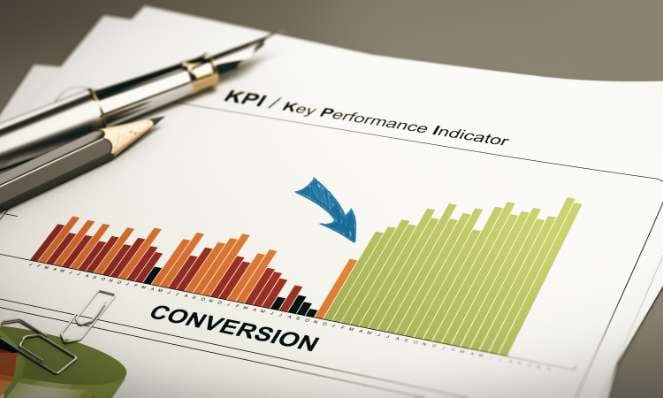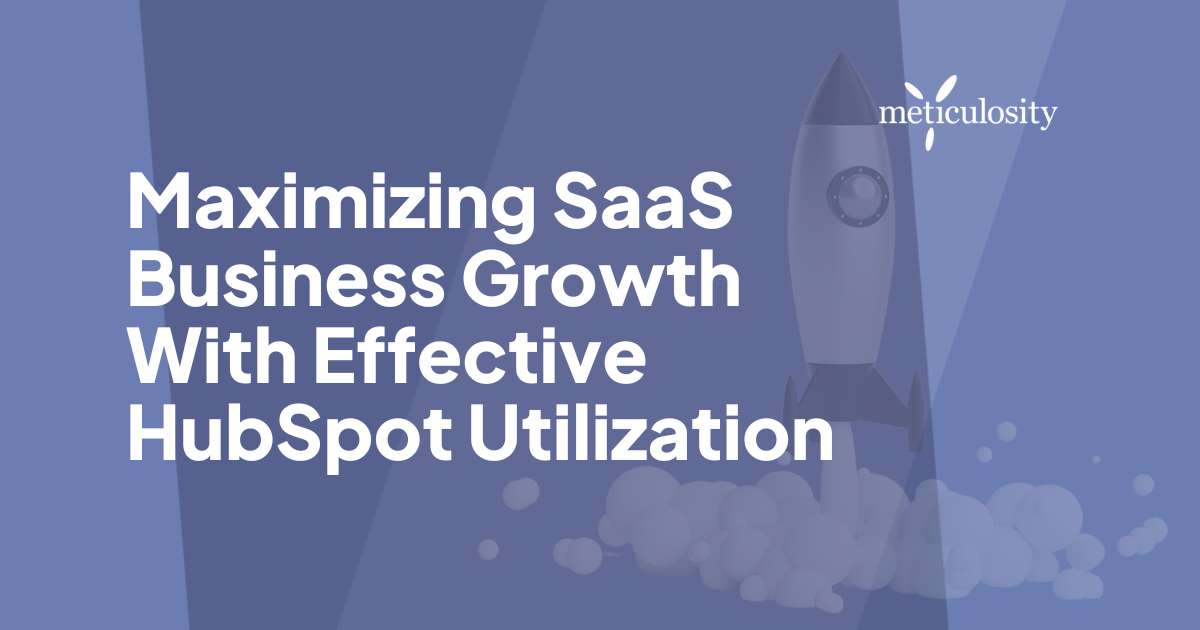Do you need help to grow your SaaS business? HubSpot might be the solution you're looking for. Our article will guide you through using HubSpot effectively, boosting your growth and success.
Read along to find out more!
Benefits of HubSpot for SaaS Businesses
HubSpot offers SaaS businesses increased website traffic and improved lead conversion. It also enhances lead nurturing, driving growth and success for your business.
Increased Website Traffic
Using HubSpot for SaaS increases website traffic significantly. The platform's advanced SEO tools and content creation resources help businesses rank higher on search engines. This attracts more visitors looking for solutions that your SaaS offers.
Integrating social media management also plays a critical role, enabling you to reach wider audiences and drive more traffic.
Improved lead conversion follows as the natural next step after increased website traffic. With more potential customers visiting your site, effective strategies are crucial to convert them into leads.
Improved Lead Conversion
HubSpot plays a pivotal role in transforming interested website visitors into sales leads. Its tools and features guide users through a streamlined journey, turning curiosity into action.
By capturing visitor information with customized forms and interactive chatbots, businesses can quickly respond to inquiries or feedback, fostering a connection between potential customers and the brand.
This immediate engagement boosts the likelihood of converting leads into paying customers.
The platform's analytics also allow tracking lead behavior across the website, giving insights into what content draws interest and where improvements are necessary. Such data-driven adjustments ensure marketing efforts always target the right audience with resonating messages.
This approach improves lead conversion rates and sets the stage for enhanced lead nurturing.

Enhanced Lead Nurturing
Effective lead nurturing transforms interested visitors into loyal customers. With the right strategies, businesses can guide potential clients more smoothly through their buying journey.
This process involves sending personalized emails, sharing relevant content, and quickly responding to inquiries. By doing so, companies establish a strong relationship with each lead, increasing the chances of turning them into paying customers.
Tools like HubSpot make this task easier by automating many aspects of lead nurturing. They help track leads' interactions and preferences to provide them with information that meets their needs at the perfect time.
This automation ensures no opportunity is missed due to delays or oversight, making every lead feel valued and understood throughout their decision-making process.
Success Stories of SaaS Companies Using HubSpot
SaaS companies like XYZ Software have leveraged HubSpot to drive impressive growth. By implementing HubSpot's robust tools for lead tracking, nurturing, and analytics, XYZ saw a 30% increase in qualified leads within six months.
This led to a notable spike in their conversion rates as well.
Furthermore, ABC Solutions utilized HubSpot's all-in-one platform to streamline its sales and marketing efforts. As a result, they experienced a 25% increase in customer retention and a 20% rise in overall revenue.
These success stories showcase the tangible impact of HubSpot on SaaS companies' bottom line and long-term business goals.
Advantages of HubSpot for SaaS Businesses
HubSpot is an all-in-one platform for sales, marketing, and customer relationships designed to enhance SaaS businesses' strategies. Read on to discover more about its advantages.
All-in-One Platform for Sales, Marketing, and Customer Relationships
HubSpot:
- An all-in-one platform
- Integrating that incorporates sales
- Marketing
- Customer relationship management for SaaS businesses.
This comprehensive solution streamlines processes, centralizes data, and enhances team collaboration.
It empowers businesses with the tools to manage leads and convert them into customers through targeted marketing efforts and personalized communication.
The integrated nature of HubSpot eliminates the need for multiple disparate systems — simplifying operations while providing a unified view of the customer journey from initial interaction to conversion.
Customization for SaaS Needs
The ability to tailor HubSpot to specific SaaS requirements is essential as we transition from an all-in-one platform for sales, marketing, and customer relationships to customization for SaaS needs.
This process allows SaaS businesses to adapt the platform's features and functionalities to their unique business model. Customization ensures that the software aligns with the specific needs of a SaaS company, providing tailored solutions for efficient operations and enhanced customer experience.
SaaS businesses can optimize HubSpot by customizing lead scoring models, creating personalized workflows, and tailoring reporting dashboards. These adaptations enable them to efficiently manage subscriptions, monitor user behavior, and track product usage data—all crucial elements in delivering a personalized experience while driving growth within the competitive SaaS landscape.
Data Analytics and Reporting
Transitioning from customizing for SaaS needs to data analytics and reporting; valuable insights can be gained from HubSpot's robust tools. The platform offers comprehensive analytics for tracking performance metrics and generating detailed marketing, sales, and customer engagement reports.
This enables SaaS businesses to make informed decisions based on real-time data, optimize strategies, and maximize growth potential. With these features tailored to the ever-evolving SaaS landscape, companies can unlock the secrets of their success through meticulous analysis of key performance indicators.
From monitoring website traffic and lead conversion rates to assessing email campaign effectiveness, HubSpot's data analytics empowers SaaS companies with meaningful information that underpins their success.
Implementing HubSpot for SaaS Businesses
Implementing HubSpot for SaaS businesses involves utilizing the Ticket Management System and streamlining sales processes. This ensures efficient customer interaction management and a streamlined sales approach.
Utilizing the Ticket Management System
SaaS businesses can effectively manage customer support and issue resolution using HubSpot's ticket management system. This feature allows for seamless tracking, assignment, and resolution of customer issues, ensuring timely responses and efficient request handling.
With its user-friendly interface and customizable automation workflows, the ticket management system streamlines communication between customers and support teams, ultimately improving overall customer satisfaction.
Incorporating the ticket management system into the operational framework empowers SaaS businesses to prioritize tasks, monitor status updates, and gain valuable insights into customer service performance.
Streamlining Sales Processes
Transitioning from utilizing the ticket management system to streamlining sales processes, SaaS businesses can optimize their sales operations for maximum efficiency and effectiveness.
By integrating HubSpot's powerful tools into the sales process, teams can automate repetitive tasks, track leads through the funnel, and accelerate deal closures. Features such as lead scoring, email templates, and pipeline management enable SaaS companies to streamline their sales processes while providing valuable insights into customer interactions.
With real-time analytics and reporting capabilities, HubSpot empowers businesses to make data-driven decisions that enhance their overall sales performance.
Implementing automation in all sales cycle stages helps SaaS companies reduce manual errors and focus on building meaningful relationships with prospects. This proactive approach ensures that no opportunity falls through the cracks while creating a seamless experience for potential customers.

Automation and Communication Features
HubSpot offers a range of automation and communication features that streamline processes and enhance customer engagement. Using workflow automation, SaaS businesses can set up triggers to automatically send personalized emails or create tasks based on specific actions taken by leads or customers.
This saves time and ensures timely and targeted communication throughout the customer journey. HubSpot's integrated chat feature facilitates real-time interactions with website visitors, enabling instant support and lead qualification.
These features boost efficiency and foster meaningful connections with prospects and customers.
To maximize the impact of these features, SaaS businesses should leverage HubSpot's automation tools to nurture leads effectively through personalized communication at each stage of the sales funnel.
By doing so, they can build stronger relationships with their audience while optimizing internal processes for greater productivity.
How to Measure Success
Measuring success involves tracking key metrics and studying case studies of successful SaaS companies. Understanding what drives growth and conversions is essential.
Key Metrics to Track
Tracking key metrics is crucial for gauging the success of your HubSpot utilization. By monitoring these important metrics, you can assess the effectiveness of your strategies and make informed decisions to drive growth:
- Customer Acquisition Cost (CAC): Keep tabs on the cost of acquiring new customers. Understanding this metric helps in optimizing marketing and sales efforts.
- Conversion Rates: Measure the percentage of visitors who take a desired action, such as signing up for a trial or purchasing a subscription. Analyzing conversion rates provides insights into the effectiveness of your funnels.
- Churn Rate: Track the rate at which customers cancel their subscriptions. A high churn rate may indicate issues with customer satisfaction or product fit.
- Lifetime Value (LTV): Assess how much value each customer brings over their entire engagement with your SaaS business. This metric guides long-term strategy and focuses on high-value customers.
- Lead-to-Customer Ratio: Monitor how many leads convert into paying customers to gauge the efficiency of your sales process and lead nurturing efforts.
- Return on Investment (ROI): Measure the return generated from investments made in marketing, sales, and customer relationship activities through HubSpot.
- Customer Engagement Metrics: Evaluate email open rates, click-through rates, and social media engagement to understand customer interactions with your brand.
- Website Traffic Sources: Analyze where your website traffic is coming from to optimize marketing channels and content strategies.
- Customer Satisfaction Scores: Gather customer feedback to measure satisfaction levels at various touchpoints in their journey.
- Sales Pipeline Velocity: Track the speed at which leads move through your sales funnel to identify bottlenecks and improve efficiency.
Case Studies of Successful SaaS Companies
Transitioning from tracking key metrics to exploring case studies of successful SaaS companies, we can see how effective utilization of HubSpot has led to tangible outcomes for businesses.
These case studies provide concrete examples of how SaaS companies have leveraged HubSpot to drive growth and achieve their business goals. The real-world success stories showcase the practical application of the platform's features and its impact on revenue generation, customer engagement, and overall business expansion.
Understanding these case studies offers valuable insights into the potential benefits and strategies that can be adopted by other SaaS businesses looking to maximize their growth with HubSpot.
In a competitive industry where growing your customer base is vital, these case studies illustrate how SaaS companies have harnessed HubSpot's power to streamline processes and nurture leads effectively.
Tips for Maximizing Success with HubSpot
Maximize success with HubSpot by integrating it with other tools and regularly analyzing and adjusting strategies. These actions are essential for staying ahead in a competitive market.
Integrating with Other Tools
HubSpot's versatility extends beyond its own capabilities. It seamlessly integrates with various other tools to create a comprehensive ecosystem for SaaS businesses. Businesses can consolidate data and streamline processes across multiple systems by connecting HubSpot with platforms such as Salesforce, Mailchimp, and Google Analytics.
This integration empowers teams to work more efficiently and effectively by providing a centralized hub for all their essential applications.
Furthermore, the ability to integrate with customer relationship management (CRM) software ensures that sales and marketing efforts are aligned while reducing manual data entry. These integrations enable SaaS companies to access valuable insights and improve targeting and personalization throughout the entire customer journey.
Partnering this flexibility with other influential business tools maximizes efficiency and effectiveness in achieving sustainable growth for your SaaS business.
Regularly Analyzing and Adjusting Strategies
SaaS businesses must actively analyze and adjust their strategies to maximize success with HubSpot. By regularly reviewing key metrics and performance indicators, companies can identify areas for improvement and refine their approach.
This proactive approach ensures that the use of HubSpot remains aligned with business goals and adapts to changes in market dynamics. Moreover, it allows businesses to capitalize on emerging opportunities and maintain a competitive edge in the dynamic SaaS landscape.
Continuously assessing the effectiveness of implemented strategies empowers SaaS businesses to stay agile and responsive, driving sustained growth and bolstering customer engagement.
Conclusion
Maximizing your SaaS business growth with effective HubSpot utilization is essential for staying competitive and expanding your customer base. Leveraging HubSpot's features for driving website traffic, converting leads, and nurturing prospects can significantly impact your business success.
By integrating with other tools and regularly monitoring key metrics, you can ensure you get the most out of HubSpot to drive your SaaS business forward. Implementing HubSpot isn't a one-time task; it requires ongoing analysis and adjustments to optimize its growth potential.
Resources for Implementing HubSpot for SaaS Businesses
HubSpot Academy offers a wide range of resources for SaaS businesses looking to implement HubSpot effectively. The Academy provides comprehensive training courses covering various aspects such as Inbound marketing, sales, service, and content strategy.
These resources include video tutorials, articles, and practical exercises to help your team understand and utilize HubSpot's capabilities.
The HubSpot Community is an invaluable resource where SaaS professionals can connect with peers to share best practices and learn from others' experiences. It provides a platform for asking questions, discussing challenges, and gaining insights into successful strategies for implementing HubSpot in a SaaS business context.
FAQs
What is HubSpot, and how can it help my SaaS business grow?
HubSpot is a software platform that offers marketing, sales, customer service, and content management tools to help your SaaS business attract more visitors, convert leads, and close customers.
Can I use HubSpot if I'm new to using software for business growth?
Yes, HubSpot is user-friendly and designed for both beginners and experienced marketers to manage their business growth strategies effectively.
How does HubSpot improve customer relationships?
HubSpot provides tools like email tracking, meeting scheduling, live chat, and customer feedback surveys to enhance communication and build stronger relationships with your customers.
Is there a cost to start using HubSpot for my SaaS company?
HubSpot offers a free version of its platform with basic features; however, advanced features require upgrading to paid plans based on your specific needs.
How long before I see results from using HubSpot in my SaaS business?
The time it takes to see results varies depending on how you utilize the platform's tools in your marketing strategy, but consistently implementing best practices can lead to noticeable improvements within a few months.






